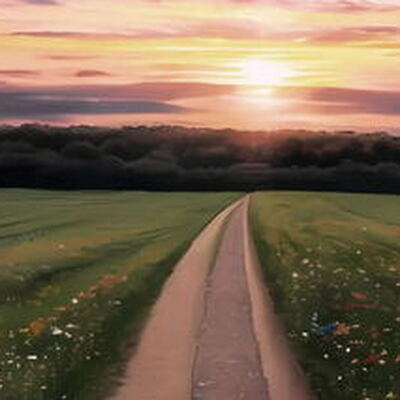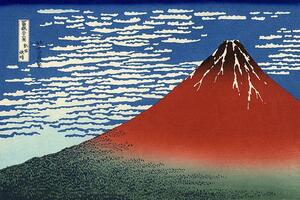What are Common Ukiyo-e Genres?
Posted By Ai Mili
Body
Ukiyo-e, which translates to "pictures of the floating world," is a genre of Japanese art that flourished from the 17th to the 19th centuries. During this time, ukiyo-e artists created woodblock prints depicting various aspects of daily life, including landscapes, portraits, and scenes from literature and theater. There are several common genres within ukiyo-e that have become iconic representations of this art form. In this article, we will explore some of the most popular ukiyo-e genres and the characteristics that define them.
One of the most well-known ukiyo-e genres is bijin-ga, or pictures of beautiful women. These prints typically feature elegant and graceful women engaged in everyday activities such as playing musical instruments, writing letters, or enjoying the cherry blossoms. Bijin-ga prints are known for their intricate details, vibrant colors, and delicate expressions, capturing the beauty and charm of women in Japanese society. Artists such as Kitagawa Utamaro and Suzuki Harunobu were famous for their bijin-ga prints, which continue to be admired for their timeless elegance.
Another popular ukiyo-e genre is kacho-ga, or pictures of birds and flowers. These prints showcase the natural world in all its beauty, depicting colorful birds, blooming flowers, and lush landscapes. Kacho-ga prints often feature a harmonious blend of flora and fauna, with intricate details and vibrant colors that bring the scenes to life. Artists like Utagawa Hiroshige and Katsushika Hokusai were masters of kacho-ga, capturing the essence of the changing seasons and the beauty of the natural world in their prints.
Kabuki-e is another common ukiyo-e genre that focuses on scenes from kabuki theater. Kabuki is a traditional Japanese form of theater that combines drama, music, and dance, featuring elaborate costumes and dramatic performances. Kabuki-e prints depict actors in colorful costumes and striking poses, capturing the energy and excitement of kabuki performances. Artists like Utagawa Kunisada and Toyohara Kunichika were renowned for their kabuki-e prints, which remain popular for their dynamic compositions and vivid depictions of kabuki actors.
Landscapes, or fukeiga, are also a prominent genre within ukiyo-e. These prints showcase scenic views of famous landmarks, such as Mount Fuji, Edo Castle, and the Tokaido Road. Landscapes in ukiyo-e are characterized by their meticulous attention to detail, atmospheric effects, and dramatic compositions. Artists like Hokusai and Hiroshige were known for their iconic landscape prints, which continue to be celebrated for their evocative depictions of Japan's natural beauty.
In addition to these genres, there are many other themes and subjects depicted in ukiyo-e prints, including historical events, folklore, and mythology. Ukiyo-e artists drew inspiration from a wide range of sources, creating a diverse body of work that reflects the cultural richness of Japan during the Edo period. The enduring popularity of ukiyo-e prints attests to their timeless appeal and artistic merit, making them a cherished part of Japan's artistic heritage.
Overall, ukiyo-e encompasses a wide range of genres that capture the beauty and vibrancy of Japanese society during the Edo period. From bijin-ga and kacho-ga to kabuki-e and landscapes, these prints offer a glimpse into a bygone era and celebrate the artistry and creativity of ukiyo-e artists. Whether depicting beautiful women, colorful birds, or dramatic kabuki performances, ukiyo-e prints continue to captivate audiences around the world with their exquisite craftsmanship and enduring beauty.
One of the most well-known ukiyo-e genres is bijin-ga, or pictures of beautiful women. These prints typically feature elegant and graceful women engaged in everyday activities such as playing musical instruments, writing letters, or enjoying the cherry blossoms. Bijin-ga prints are known for their intricate details, vibrant colors, and delicate expressions, capturing the beauty and charm of women in Japanese society. Artists such as Kitagawa Utamaro and Suzuki Harunobu were famous for their bijin-ga prints, which continue to be admired for their timeless elegance.
Another popular ukiyo-e genre is kacho-ga, or pictures of birds and flowers. These prints showcase the natural world in all its beauty, depicting colorful birds, blooming flowers, and lush landscapes. Kacho-ga prints often feature a harmonious blend of flora and fauna, with intricate details and vibrant colors that bring the scenes to life. Artists like Utagawa Hiroshige and Katsushika Hokusai were masters of kacho-ga, capturing the essence of the changing seasons and the beauty of the natural world in their prints.
Kabuki-e is another common ukiyo-e genre that focuses on scenes from kabuki theater. Kabuki is a traditional Japanese form of theater that combines drama, music, and dance, featuring elaborate costumes and dramatic performances. Kabuki-e prints depict actors in colorful costumes and striking poses, capturing the energy and excitement of kabuki performances. Artists like Utagawa Kunisada and Toyohara Kunichika were renowned for their kabuki-e prints, which remain popular for their dynamic compositions and vivid depictions of kabuki actors.
Landscapes, or fukeiga, are also a prominent genre within ukiyo-e. These prints showcase scenic views of famous landmarks, such as Mount Fuji, Edo Castle, and the Tokaido Road. Landscapes in ukiyo-e are characterized by their meticulous attention to detail, atmospheric effects, and dramatic compositions. Artists like Hokusai and Hiroshige were known for their iconic landscape prints, which continue to be celebrated for their evocative depictions of Japan's natural beauty.
In addition to these genres, there are many other themes and subjects depicted in ukiyo-e prints, including historical events, folklore, and mythology. Ukiyo-e artists drew inspiration from a wide range of sources, creating a diverse body of work that reflects the cultural richness of Japan during the Edo period. The enduring popularity of ukiyo-e prints attests to their timeless appeal and artistic merit, making them a cherished part of Japan's artistic heritage.
Overall, ukiyo-e encompasses a wide range of genres that capture the beauty and vibrancy of Japanese society during the Edo period. From bijin-ga and kacho-ga to kabuki-e and landscapes, these prints offer a glimpse into a bygone era and celebrate the artistry and creativity of ukiyo-e artists. Whether depicting beautiful women, colorful birds, or dramatic kabuki performances, ukiyo-e prints continue to captivate audiences around the world with their exquisite craftsmanship and enduring beauty.








Comments